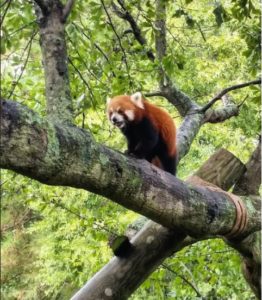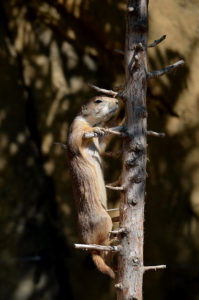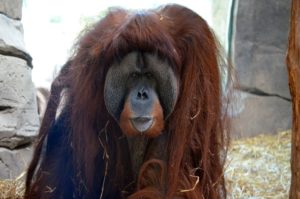June is National Zoo & Aquarium month! This month is not only intended to encourage more people to visit zoos & aquariums, but also to raise awareness about the role they play in our society. The work of Zoos & Aquariums happens 24 hours a day, 7 days a week, 365 days a year- the conservation, education and research happening at these facilities around the world never rests. The need for the work they do is becoming more & more important every day. The future of endangered species as well as educating individuals about conservation depends upon their continuing efforts and it just so happens that Zoos & Aquariums are one of the best ways to present this information to the curious public.
I am lucky to be a part of an amazing group of volunteers at a local zoo. As a zoo volunteer, I quickly learned zoos (& aquariums) are so much more than just a place that’s fun for guests to visit. Yes, they are marketed as family friendly, tourism destinations but they have so much more to offer guests & wildlife of the world!
Zoos & Aquariums are working hard to establish memorable visitor experiences AND excellent animal care procedures. For visitors, this includes incorporating interactive and even hands-on programs in order to help build an appreciation & a stronger connection between guests and the wildlife all while in a fun and informal setting. For the animals, this means introducing more naturalistic enclosures & implementing animal enrichment exercises so they can demonstrate behavior that is common for their particular species, not to mention top of the line veterinary care when needed.
In my role as an education volunteer at the zoo, we work hard to ‘interpret’ the animal collection to our guests of all ages and engage them in conversation about wildlife adaptations, environmental & conservation efforts that are being made with the particular species to better enhance their visitor experience allow them to walk away with an enjoyable learning experience.
“We believe in a better future for all living things. We envision a world where all people respect, value and conserve wildlife and wild places.” –The Association of Aquarium & Zoos
Association of Zoos & Aquariums assures that the highest standards of animal care are met for accredited facilities. More than 200 AZA accredited institutions meet the always evolving top-of-the-line standards & guidelines for animal care & management. These standards are set to facilitate and promote education, care & conservation of animals.
Looking for something to do this summer? Consider a trip to the zoo or aquarium! You’re sure to have a fun time & learn some new things along the way. After your visit, challenge yourself or your children to come up with some ways you help the wildlife in & around your neighborhood.
Thanks for reading! Enjoy the Summer,
Sam W.
Sources:
https://www.aza.org/
https://ngcproject.org/blog/june-national-zoos-and-aquariums-month
Zoos Are Not Prisons. They Improve the Lives of Animals.
 That Pet Blog That Pet Place Pet Blog
That Pet Blog That Pet Place Pet Blog













